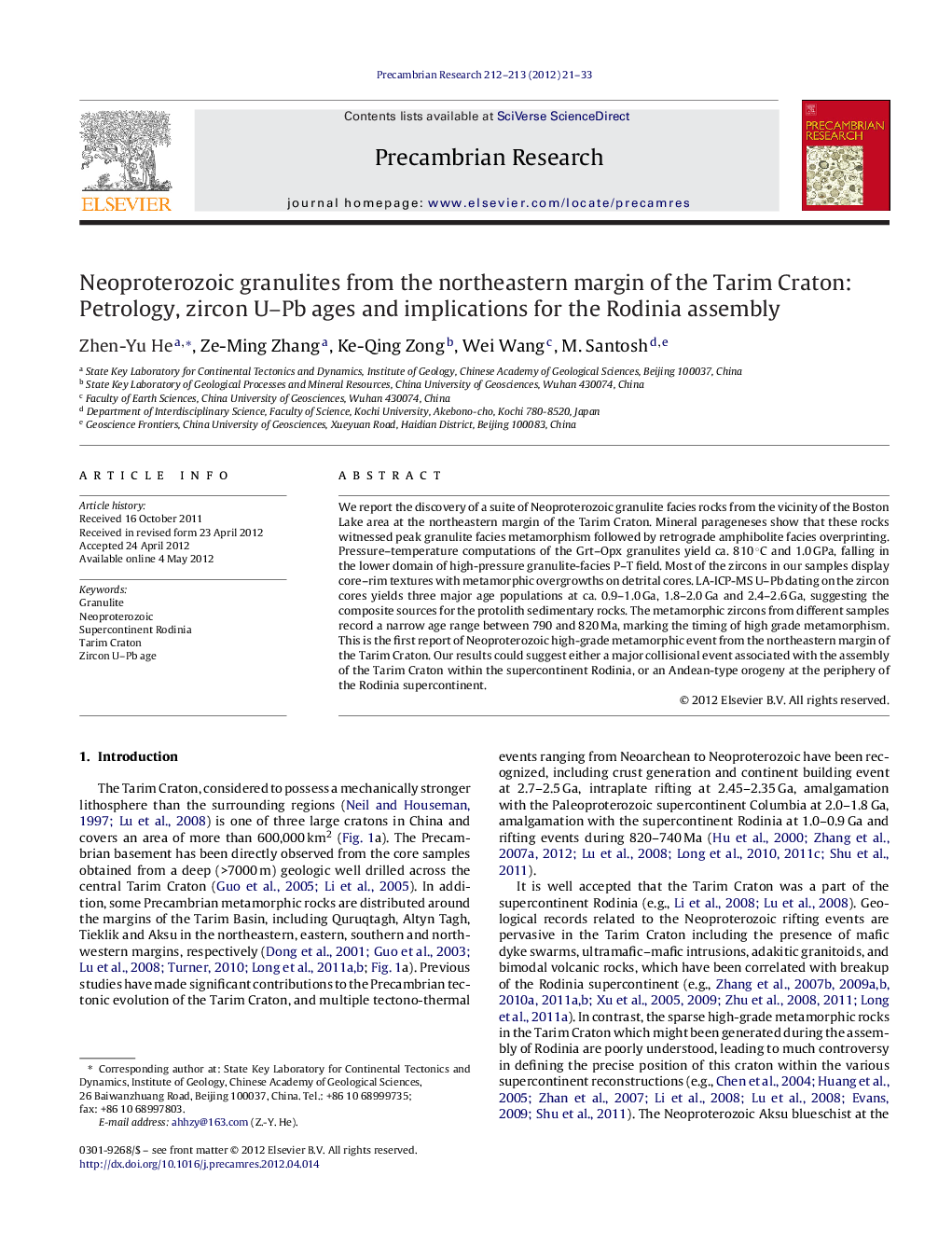| Article ID | Journal | Published Year | Pages | File Type |
|---|---|---|---|---|
| 4723531 | Precambrian Research | 2012 | 13 Pages |
We report the discovery of a suite of Neoproterozoic granulite facies rocks from the vicinity of the Boston Lake area at the northeastern margin of the Tarim Craton. Mineral parageneses show that these rocks witnessed peak granulite facies metamorphism followed by retrograde amphibolite facies overprinting. Pressure–temperature computations of the Grt–Opx granulites yield ca. 810 °C and 1.0 GPa, falling in the lower domain of high-pressure granulite-facies P–T field. Most of the zircons in our samples display core–rim textures with metamorphic overgrowths on detrital cores. LA-ICP-MS U–Pb dating on the zircon cores yields three major age populations at ca. 0.9–1.0 Ga, 1.8–2.0 Ga and 2.4–2.6 Ga, suggesting the composite sources for the protolith sedimentary rocks. The metamorphic zircons from different samples record a narrow age range between 790 and 820 Ma, marking the timing of high grade metamorphism. This is the first report of Neoproterozoic high-grade metamorphic event from the northeastern margin of the Tarim Craton. Our results could suggest either a major collisional event associated with the assembly of the Tarim Craton within the supercontinent Rodinia, or an Andean-type orogeny at the periphery of the Rodinia supercontinent.
Graphical abstractFigure optionsDownload full-size imageDownload as PowerPoint slideHighlights► Neoproterozoic granulite at the northeastern margin of the Tarim Craton. ► Timing of metamorphism constrained as ca. 790–820 Ma from U–Pb zircon chronology. ► The protolith sediments were deposited in the Early Neoproterozoic. ► Metamorphism probably happened during a collision event or an Andean-type orogeny.
